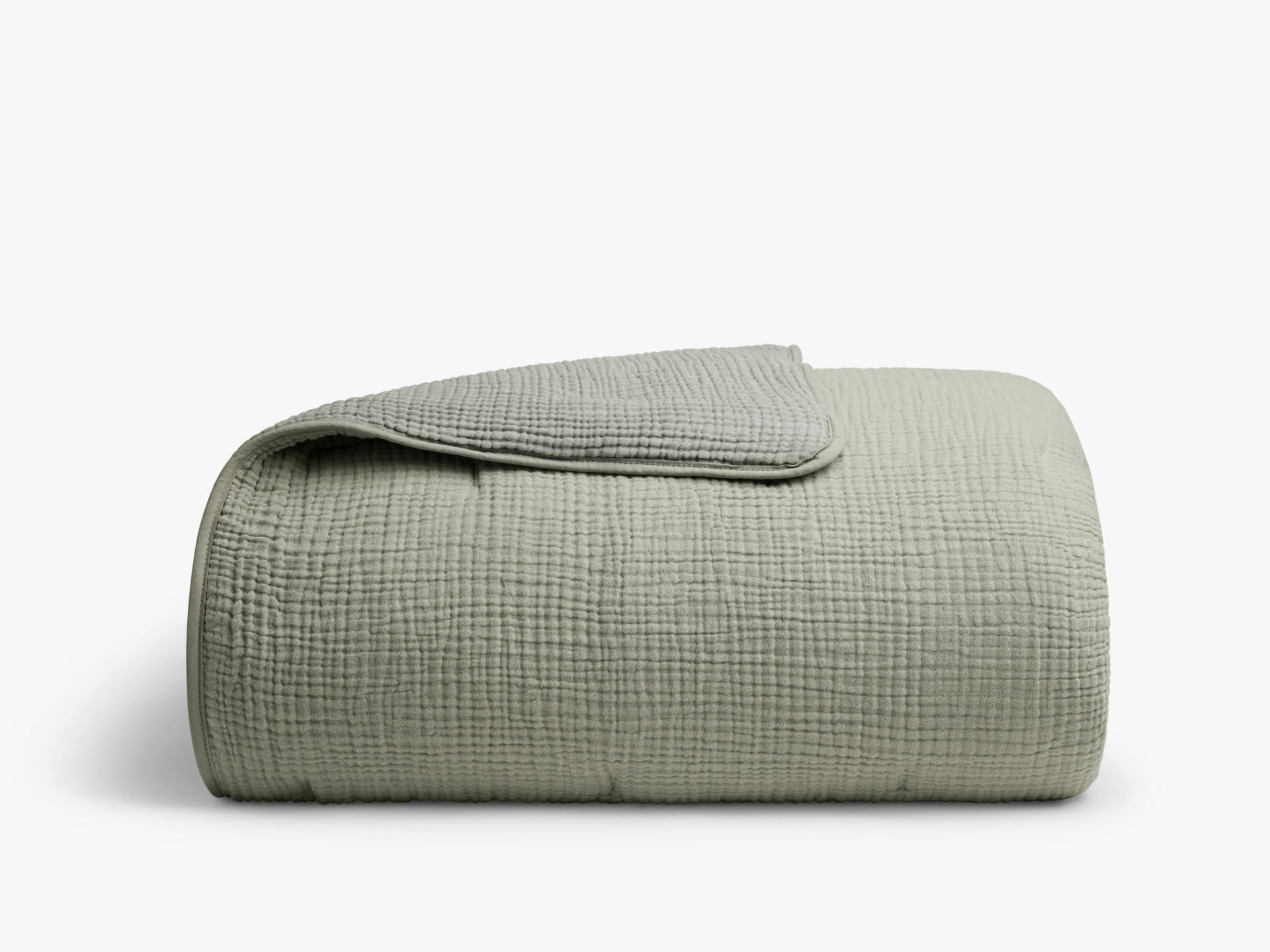Cloud Cotton Quilt | Parachute
Bring an alluring loftiness and elegance to your linens with this light and airy bedding essential, made of the finest 100% long-staple Turkish cotton and overstuffed for warmth. So soft and fluffy – you must feel it to believe it.






by Sally
This quilt is soft and light and perfect for summer. Only negative is it snags easily so just be careful. But very happy. Bought two and no regrets.
by Tina
We bought the cloud quilt and cloud shams and love them! They are so soft and comfy. The quilt is fluffy and just the right weight for summer or winter. I sleep better with it!
by Lucy
So cozy it makes you resist getting out of bed. Nice weight, excellent breathability and exceptional cuddle factor.
by Noelle
My significant other and I sleep very hot and have been looking for a comfortable blanket that kept us cool. This blanket is exactly what we needed, it’s extremely comfortable to sleep in without being to hot. The only negative is it snags very easy, I have dogs so that’s been an issue but if you don’t have animals you’ll be fine.
by Abby
Amazingly soft fabric, very light and airy, yet satisfyingly substantial at the same time.
by Liberty
This is such a soft and comfortable quilt. It looks great on our bed. My husband and I both love this quilt!
by Lucille
The look and feel of the quilt is so comfortable. I feel snug as a bug in the bed. Plus the shade is beautiful!